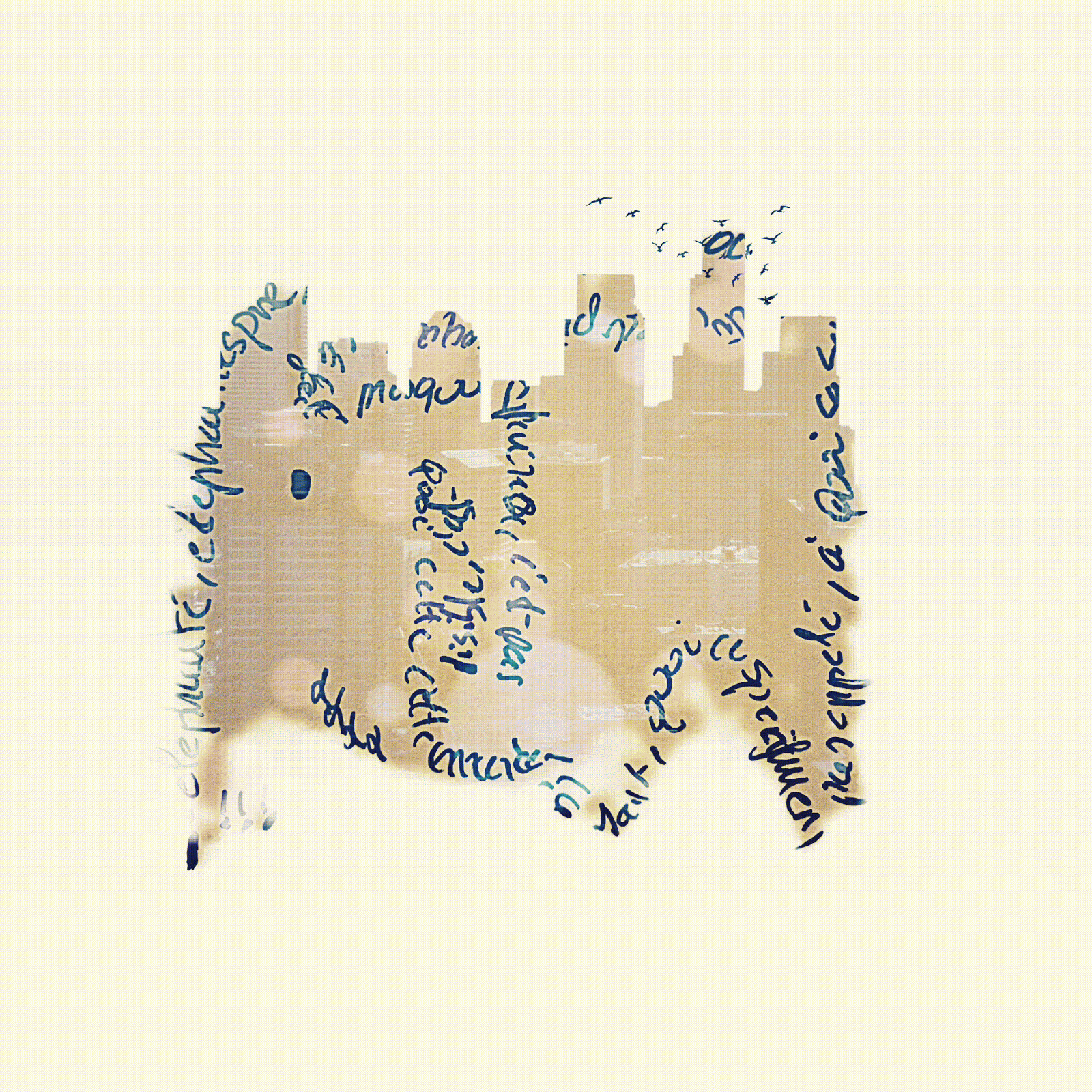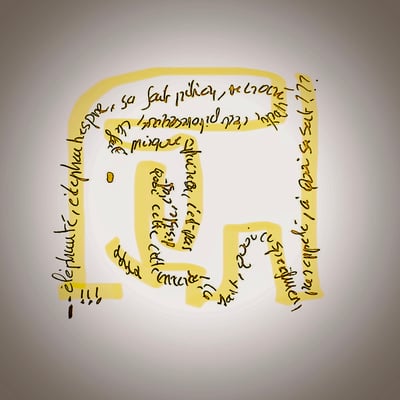How can yellow elephants and constraints help with climate adaptation?
Micène Fontaine, June 15, 2021
The page was blank, except for yellow lines. Did a 3-year old steal my journal? Was it a building, a hippo, or a map to a long-lost treasure I meant to draw a few weeks ago when I last opened this journal? It doesn't stop me, but I can't draw, hence the hesitation about what the lines might have been. I decided it was an elephant. A yellow elephant on my otherwise blank page.
This time "words" were on my mind, and I was about to turn to a - proper - blank page in the journal when I thought, why not add words to these yellow lines? Why not embrace the lines? A blank page can be dizzying and, once you get started, where do you stop? Starting is a slow process. Knowing when to stop is agonizing - to me. The yellow lines solved both issues.
After my yellow elephant-inspired words were added to the page at record speed, my mind did what minds do. It wandered away from the land of yellow elephants into the realm of resiliency and adaptation. No idea how or why it got there. But getting there, it did, so I typed "constraints and resilience" in Google. Was there a link, I wondered? I did not know… but Google would tell me. What caught my attention was search result number 5 of "about 62,900,000 results in 0.57 seconds" - don't you just love this? As I scanned the page for the word "constraint," one line jumped out: "if resilience can be engineered into social systems, research should be focused on identifying the variables, strategies, and constraints that can help bring this about." 1
My eyes lingered on "constraints that can help bring this about." There it was. Constraints can help bring things about. A single search result confirmed my hunch that constraints (yellow lines) and resilience were inextricably linked. Since it was from an article published in "Journal of Homeland Security and Emergency Management, Volume 14 Issue 4," I decided it was a reliable enough source to consider my hunch validated (Warning: Don't try this at home. I have never heard of this journal. I have no idea if it's a reliable source, but it "looked" the part, and the pull of confirmation bias was too strong to resist. I needed to get back to my journal. I had a giraffe to draw to artificially create a new set of constraints. That's how my brain works).
In an attempt to connect dots - as minds tend to want to do - I started thinking about a recent conversation with Vasileios Latinos about his "Climate Adaptation Thinking and Resilient Cities" #changebydesign session. I wondered: What if the constraints imposed by the dire need for climate adaptation strategies could prove fertile ground for innovative solutions, rather than for division between those who believe it's a hoax and those who know we are running out of time to act? What if the constraints stemming from the need for climate adaptation could help bring about resilience throughout the built environment?

What are the constraints? What are the frameworks? How can design professionals leverage these yellow lines to help "co-design, co-implement and co-monitor their city's or community's resilient future?"
So, I'll turn it over to you, what are the yellow elephants in your own practice?
Here is to embracing constraints to effect change - by design.
PS: Doubting or intrigued by “The Power of Creative Constraints”? Check out Brandon Rodriguez’ 4-minute video TED talk on the topic. And, of course, check out our Change by Design session: Climate Adaptation Thinking and Resilient Cities.
1 Da Silva Stefano, G., Lacerda, D. P., Veit, D. R., & Pantaleão, L. H. (2017). Identifying Constraints to Increase the Resilience of Cities: A Case Study of the City of Porto Alegre. Journal of Homeland Security and Emergency Management,14(4). doi:10.1515/jhsem-2016-0057





